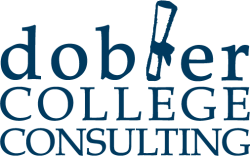Making the Most of Your Financial Aid Eligibility
 As many of you are working on your FAFSA right now, and trying to make sure you maximize your aid eligibility, I wanted to share a few tips that may help you along the way. Keeping in mind that you should always be truthful on your aid applications, none of these tips is going to help you game the system or give you places to hide our money. However, each of them can help you make timely decisions that could significantly affect your aid eligibility.
As many of you are working on your FAFSA right now, and trying to make sure you maximize your aid eligibility, I wanted to share a few tips that may help you along the way. Keeping in mind that you should always be truthful on your aid applications, none of these tips is going to help you game the system or give you places to hide our money. However, each of them can help you make timely decisions that could significantly affect your aid eligibility.
1. Pay off consumer debt, such as credit card and auto loan balances prior to filing – FAFSA asks you about cash assets available to you on the day you file.
2. Likewise, accelerate necessary expenses, to reduce available cash. For example, if you need a new car or refrigerator, buy it before you file the FAFSA.
3. Prepay your mortgage. FAFSA does not ask about home equity.
4. Spend down the student’s assets and income first – assessed at a higher rate (20% versus 5.64%). By spending them down during the first year, they are not available in year two for another 20% assessment.
5. If you feel that your family’s financial circumstances are unusual, make an appointment with the financial aid administrator at your school to review your case. Sometimes the school will be able to adjust your financial aid packag4 using a process known as Professional Judgment.
6. Maximize contributions to your retirement fund. FAFSA does not ask about retirement monies.
7. Do not withdraw money from your retirement fund to pay for school, as distributions count as taxable income, reducing next year’s financial aid eligibility. If you must use money from your retirement funds, borrow the money from the retirement fund instead of taking a distribution.
8. If grandparents want to give money to the student to help them pay for their education, ask them to wait until the student’s last year of college. Any money gifted to the student has to be reported on the FAFSA and reduces next year’s financial aid eligibility. By waiting until the student’s last year, there is no penalty to worry about the following year.
If you would like some assistance with your college search or financial aid process, contact me today for a free 60-minute consultation.
Here’s what other families like yours are saying about how Dobler College Consulting made a difference for them.




